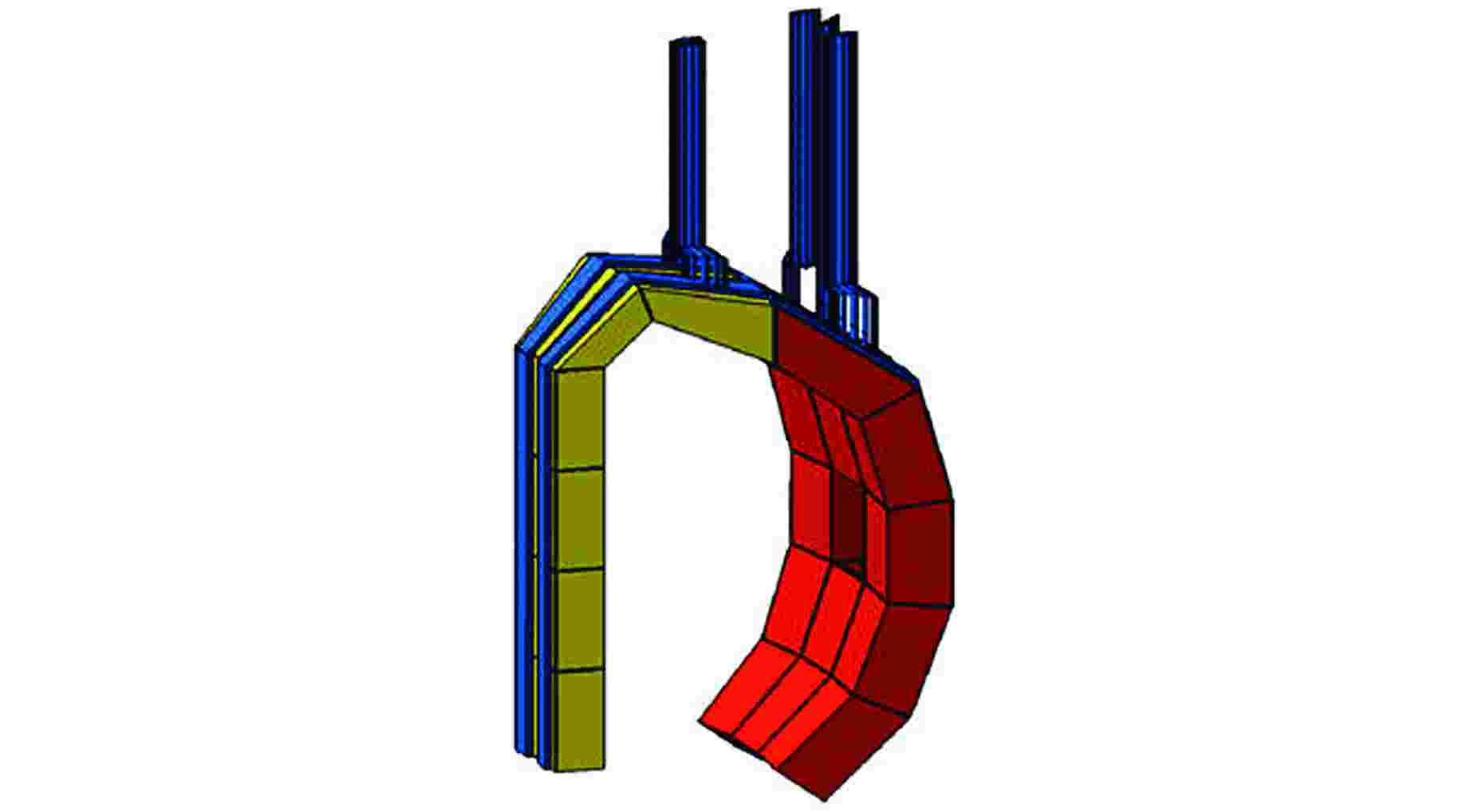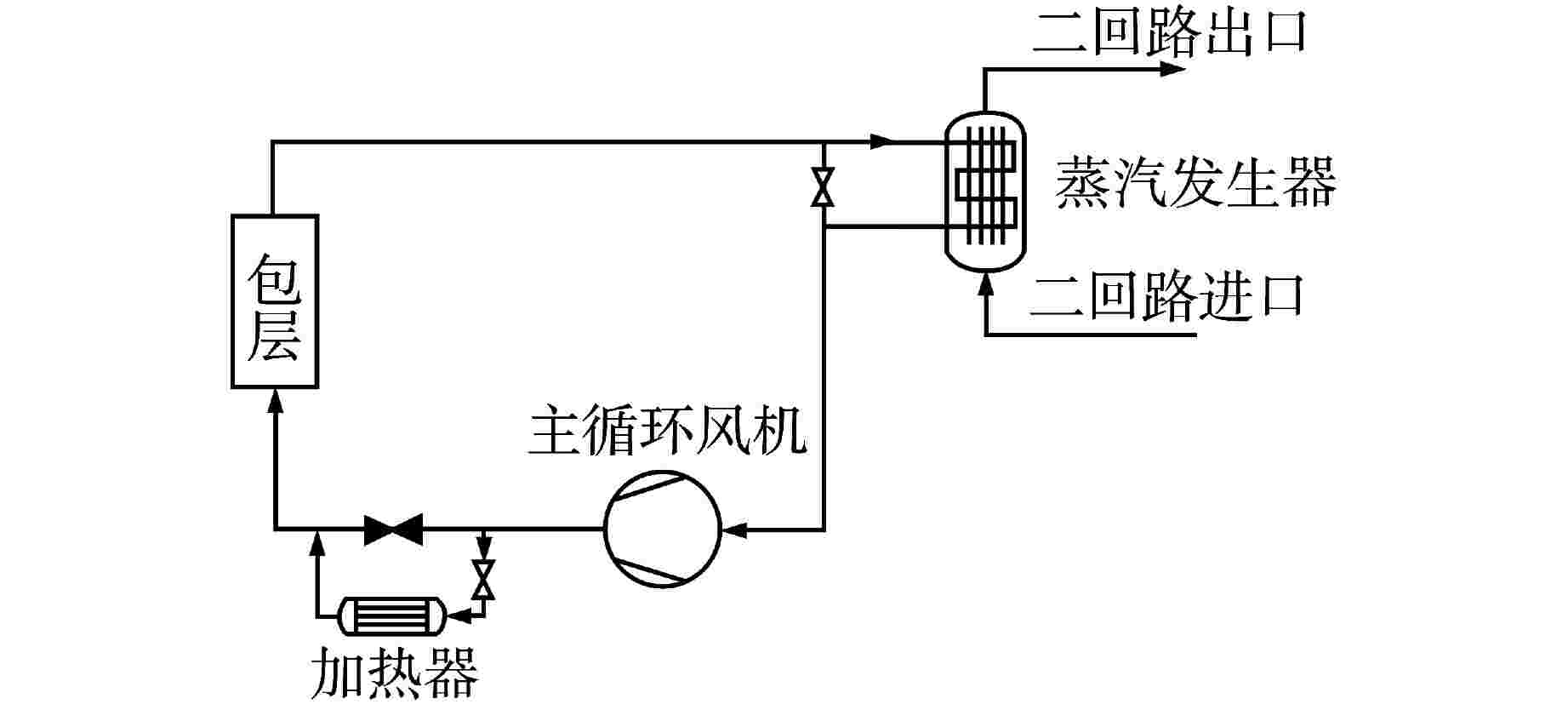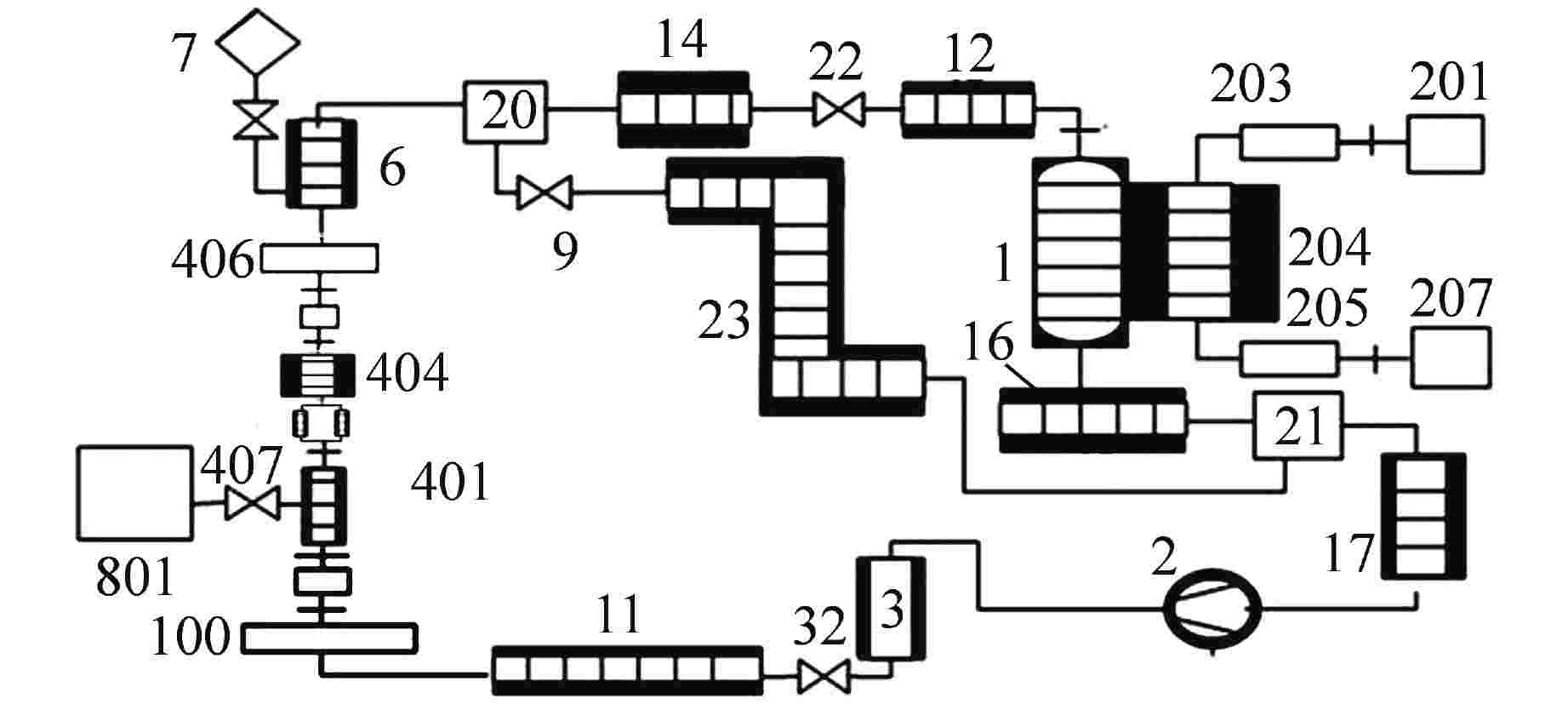Safety Analysis of China Fusion Engineering Test Reactor Helium Cooled Blanket
-
摘要: 为了评估中国聚变工程试验堆(CFETR)氦冷包层系统的安全性及优化包层设计,基于CFETR氦冷包层的设计特点梳理了包层系统事故初始事件,确定了事故列表与设计基准事故;并采用最佳瞬态估算程序RELAP5对CFETR氦冷包层模块进行了热工水力学的稳态分析,在此基础上参考设计基准事故要求进行了事故瞬态的初步安全分析。分析结果表明:聚变堆氦冷包层系统事故安全分析应重点关注系统不同位置的失去冷却剂事故(LOCA);对真空室内(in-vessel)LOCA大破口事故进行了分析计算,给出了包层第一壁最高温度和真空室内最高压力,满足现有验收准则要求。Abstract: In order to evaluate the safety of helium cooled blanket system of China Fusion Engineering Test Reactor (CFETR) and optimize the blanket design, this study presents the initial events of accidents, and determines the accident list and design basis accidents based on the design characteristics of CFETR helium cooled blanket. The thermal hydraulic steady-state analysis of CFETR helium cooled blanket module is carried out by using the best transient estimation program RELAP5. The preliminary safety analysis of accident transient is carried out according to the requirements of design basis accident. The results show that the LOCA accidents in different positions should be focused on in the accident safety analysis of helium cooled blanket system; The in-vessel LOCA large break accident is analyzed and calculated, and the maximum temperature of the first wall and the maximum pressure in the vacuum vessel are given, which meet the requirements of the acceptance criteria.
-
Key words:
- Safety analysis /
- Fusion reactor /
- Design basis accident
-
表 1 事故验收准则
Table 1. Accident Acceptance Criteria
事故类别 验收准则 Ⅰ 系统某些物理参数波动始终维持在设计允许偏差内,不会触发安全保护 Ⅱ 反应堆余热可导出 系统热构件温度未超过设计限值,无设备损坏 系统内放射性介质可控,安全防护屏障未破坏 放射性释放量小于10 mSV,向环境释放量小于0.1 mSv Ⅲ 反应堆余热可导出 系统压力、温度未超过设计限值最终回到可控范围内 放射性物质释放最终停止,总释放量在设计允许范围内,向环境释放量小于10 mSv 真空室未出现超温、超压现象且其中的泄漏介质质量在允许范围内 水冷一回路需考虑偏离泡核沸腾(DNB)设计准则 Ⅳ 反应堆余热可导出 系统压力、温度未长时间超过设计限值并最终回到可控范围内 事故导致的设备元件损坏在限值范围内 放射性物质释放最终停止,总释放量在设计允许范围内,向环境释放量小于10 mSv 真空室未出现超温超压现象且其中的泄漏介质质量在允许范围内 安全壳屏障、反应堆厂房与结构不受损坏 水冷一回路需考虑DNB设计准则 事故后产生的氢气量在可接受的范围内 表 2 事故发生前的系统初始状态
Table 2. Initial State of the System before the Accident
参数名 参数值 氦冷回路系统压力/MPa 12 氦冷包层入口温度/℃ 300 氦冷回路入口流量/(kg·s−1) 200 真空室的总体积/ m3 4000 正常运行情况下温度/℃ 170 氦冷回路冷却真空室扇区/个 2 氦冷回路包层模块/个 54 表 3 事故序列
Table 3. Accident Sequence
时间/s 事故序列 0 包层第一壁发生大破裂,氦气进入真空室,造成等离子体破裂 0~1 等离子体破裂后,包层第一壁表面热流密度上升到5 MW/m2,持续100 ms后迅速下降 1 包层出口压力降到10 MPa,触发安全隔离阀保护信号 1.1 包层第一壁温度达到最高值648℃,之后迅速下降 6 氦气系统隔离阀完全关闭 6.1 氦气停止向真空室泄漏 表 4 事故后瞬态结果
Table 4. Transient Results after Accident
In-vessel
LOCA 事故包层第一壁最高
温度/℃真空室内最高
压力/kPa真空室内最大
氦气泄漏量/kg最大破口(80根
管道破裂)648 88 160 验收准则要求 650 200 待定 -
[1] 张国书,冯开明. 中国HCSB TBM模块的优化与设计进展[J]. 核动力工程,2010, 31(S2): 107-110. [2] 冯开明, 张国书, 栗再新, 等. 中国氦冷固态增殖剂实验包层模块设计描述报告(第三版)[R]. 成都: 核工业西南物理研究院, 2013. [3] 赵周,胡刚,王琦杰,等. 中国氦冷固态增殖剂试验包层模块1×4方案子模块后板结构设计[J]. 核聚变与等离子体物理,2014, 34(3): 224-229. doi: 10.3969/j.issn.0254-6086.2014.03.006 [4] WAN Y X, LI J G, LIU Y, et al. Overview of the present progress and activities on the CFETR[J]. Nuclear Fusion, 2017, 57(10): 102009. doi: 10.1088/1741-4326/aa686a [5] ISELI M. Safty guidelines for test blanket systems (V3.1): D_338HVX[R]. Cadarache: ITER, 2011 [6] ISELI M. Accident Analysis Specifications for TBM (V1.2): D_2UV6AZ[R]. Cadarache: ITER, 2010 [7] ACCIDENT ANALYSIS REPORT (AAR) volume II, v4.10: D_2DJFX3[R]. Cadarache: ITER, 2014 -






 下载:
下载:




